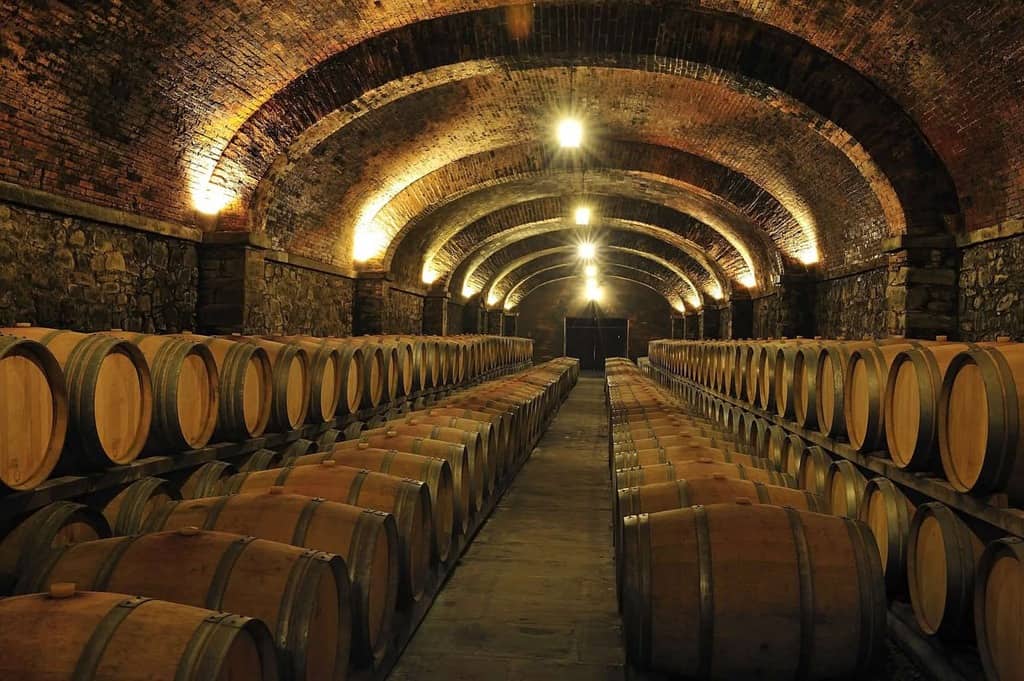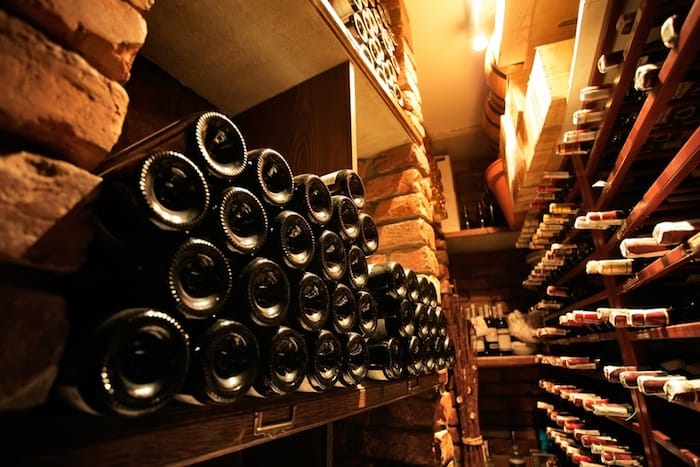Storing wine for both the short and long term can have a significant impact on the flavor and aroma of the wine when you eventually pop the cork. No wine is created equal, but there are some general rules to adhere to when it comes to wine storage temperature for both red, white, sparkling and dessert wine.
In this article, we’ll cover what those optimal temperatures are for various styles, in addition to offering some recommendations for affordable wine storage units and coolers. Lastly, we’ll provide some basic tips on how to make your wine last longer outside of the temperature itself.
What’s the Best Wine Storage Temperature?
If you’re expecting one magical number to solve your wine storage temperature issues, industry professionals will argue that it’s not as black and white as one might hope. Generally, it is advisable to keep wine stored at temperatures between 45 and 60 degrees Fahrenheit. This article is geared towards consumers looking to drink wines within a few years of purchase.
In the broad scheme of things, few wines require lengthy aging to achieve full development. Bordeaux blends, Barolos, and Nebbiolo-based reds are a few examples of anomalies. The vast majority of wines, however, can certainly benefit from proper storing techniques to preserve and in some cases enhance them in the short term.
Before we get into optimal temperatures broken down by wine style, the following general storage techniques must be always be employed to best preserve your wine collection.
Optimal Wine Storage Techniques
Keep your wines cool and avoid any temperature fluctuation.
Wines stored in relatively warm environments will deteriorate in aromatic and flavor quality more quickly. Any temperatures over 75 degrees Fahrenheit can significantly shorten the life span of a wine regardless of style. At a minimum, aim to store your wines at temperatures below 60 degrees with as little temperature variation within storage as possible.
It’s depressing to hear, but storing wine on racks in the kitchen or near your stove is not a good idea given the heat that tends to gather in these areas. Additionally, if you store your wine upstairs, remember that heat tends to rise. Consider storing your wines on the lower levels of your house or apartment, preferably in a basement where it remains cool and consistent.
Do not use the refrigerator for wine storage long-term. An exception to this is if you’re storing wine after you’ve already popped the cork.
For the casual wine consumer, it’s incredibly common to see wine stored in the fridge since it’s typically consumed not long after purchase. If that’s your intent, then you don’t have much to worry about. However, if you’re looking to store wine in a typical refrigerator that utilizes temperatures below 45 degrees Fahrenheit for the long term, it won’t be long before you dry out the cork. This allows air to sneak in and impact the wine, dulling both the aromatics and dominant flavors.
Generally, most Sparkling White Wine, Light-medium Bodied Dry & Sweet White Wine, and some Full-bodied White Wines can safely be stored in the fridge if you plan on drinking them within a couple days of purchase. This also keeps them at optimal serving temperature. Red wine should only be stored in the fridge if you’ve already opened the bottle.
Avoid exposing bottles of wine to light, especially ultra-violet light.
Almost as detrimental to a wines aging potential as temperature is exposure to light. Ultra-Violet (UV) light sources, whether they be artificial or from exposure to sunlight can damage the quality of a wine over time and shorten its optimal lifespan.
Try your best keep your wine in cool, dark places. Closets on the lower levels of your house or basements are ideal. You can also cover the bottles with aerating, breathable covers that don’t keep the heat trapped beneath. There’s a reason why you don’t see too many clear glass bottles of wine — darker bottles help keep the UV exposure out.
RELATED: The 5 Main Types of Wine Corks
Store your wines on their sides, and monitor the humidity wherever you store them.
The reason why wine is typically stored on its side isn’t for looks. It’s because the wine itself coming into contact with the cork helps keep it moist, and thus, in tact over time. A cork remaining in good condition is essential. If it were to dry out, the wine could be exposed to air and quickly go bad.
If for some reason you’re not able to store wine on its side, try to keep the humidity in your storage area around 60-65%. Try not to go too far over this, or corks could begin to acquire mold.
Utilize a wine cooler and or wine cellar for both short and long-term wine storage.
As we mentioned earlier, the vast majority of wine out there is crafted with the intent for consumption within a few years of purchase. For these wines, it’s advised that you consider purchasing an energy efficient, quiet wine cooler with two-zone temperature control. This allows for the ability to store at least two styles of wine at different temperatures for the relative short term safely.
White wines should typically be kept at slightly cooler temperatures compared to reds. For instance with my wine cooler, I store my white wine in the top zone at apprx. 52 degrees Fahrenheit, with my red wine in the bottle zone at appx. 57 degrees Fahrenheit. For long term storage and for more age-worthy wines, consider investing in a wine cellar or larger storage unit or room.
Best Red Wine Storage Temperature
For optimal short-term storage and ready-to-serve temperature — red wine should be stored at temperatures between 55 degrees Fahrenheit and 60 degrees Fahrenheit.
Best White Wine Storage Temperature
White wines, in general, can safely be stored at slightly cooler temperatures compared to their red wine counterparts. Consider storing light and medium-bodied white wines between 45 and 50 degrees Fahrenheit. Heavier-bodied white wines, such as Chardonnay and Viognier should be stored at temperatures between 52 and 55 degrees Fahrenheit.
Best Wine Storage Temperature for Champagne & Sparkling Wine
The key to storing all forms of Champagne and Sparkling Wine is maintaining a consistently cool temperature with elevated humidity. Note that Champagne and most Sparkling Wine is distributed and ready to drink as is. Aging is not necessary. We recommend storing Champagne at 50 degrees Fahrenheit, on its side with about 75% humidity. This ensures that the cork is preserved as not to release any of the effervescence. Again, keep stored Sparkling Wine away from exposure to light.
Optimal Fortified Wine Storage Temperature & Conditions
Storing temperatures for fortified wine, such as your typical Ports, Tawny Ports and LBV (Late Bottled-Vintage Ports) is, for the most part, the same. We recommend between 55 and 57 degrees Fahrenheit.
As a side note, the style of port or other fortified wine you’re consuming will have varied lifespans once you’ve popped the bottle. That’s because some ports, such as Vintage Ports, are aged for very long periods in the bottle and are unfiltered. Thus, exposure to oxygen will quickly deteriorate the liquid once exposed. On the other hand, Tawny Ports and LBV Ports can last up to a month or so once open as oxygen was a critical factor in the production process — so they’ve already been exposed.
Best Dessert Wine Storage Temperature
Most Dessert (Sweet) Wine (such as Sauternes) can safely be stored at temperatures around 55 degrees Fahrenheit.
You are reading “The Best Temperatures & Methods to Store Wine” Back To Top
wine storage temperature, best temperature to store white wine, best temperature to store red wine, sparkling wine storage temperature, dessert wine storage temperature: wine refrigerators


[…] it will serve your purpose to have a wine cooler handy. It provides the right temperature for properly storing your wine, preserves its flavor, organizes your collection, and helps you enjoy it all the […]
[…] needs to be stored at temperatures of between 45 and 60 degrees Fahrenheit. Although, 55 degrees is the most suitable temperature. You […]